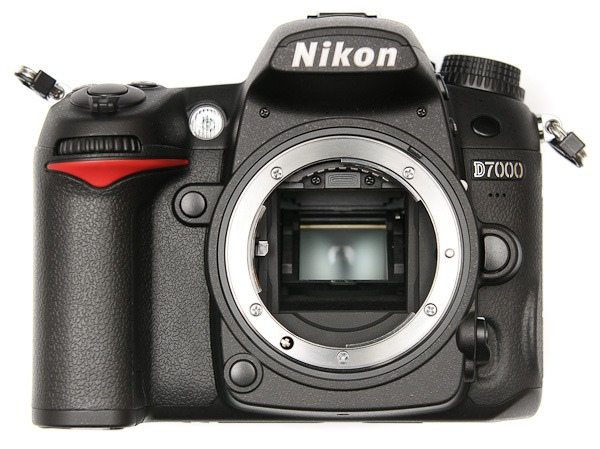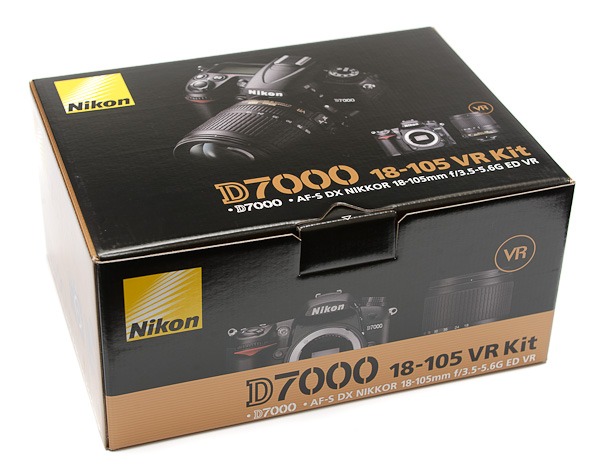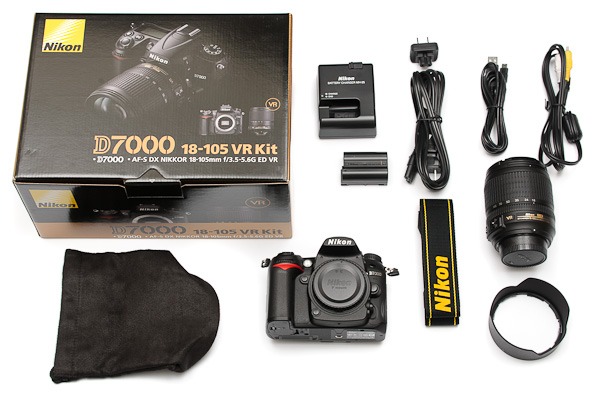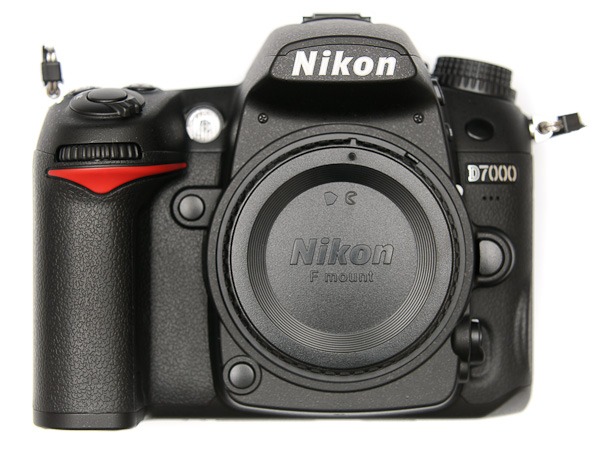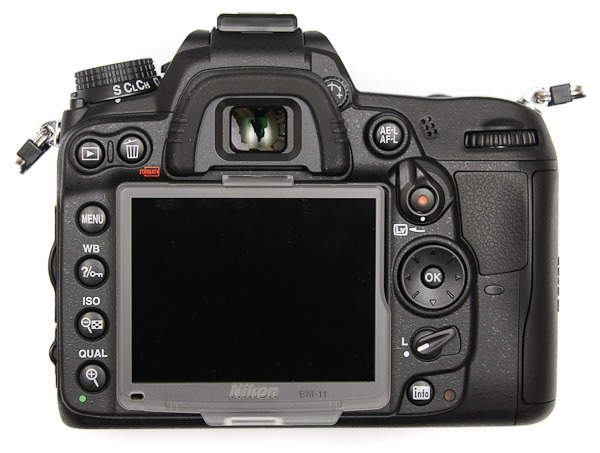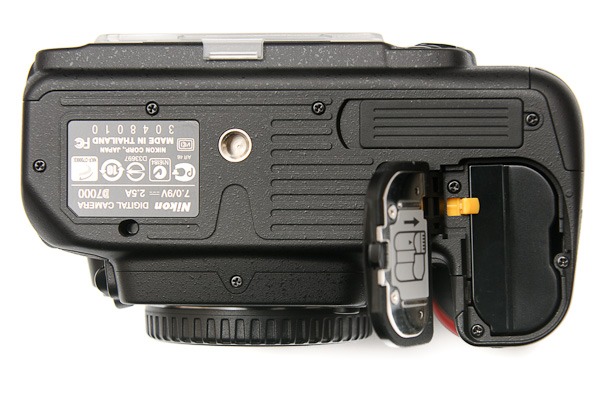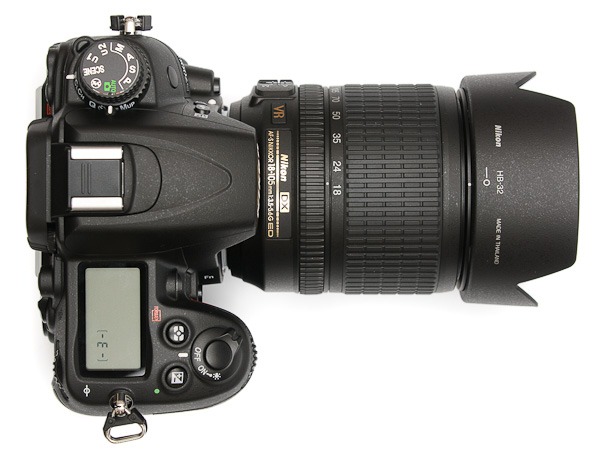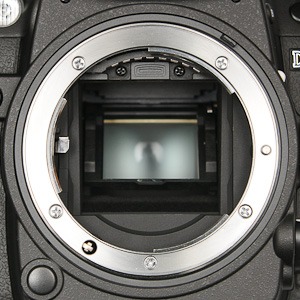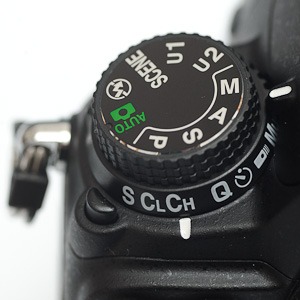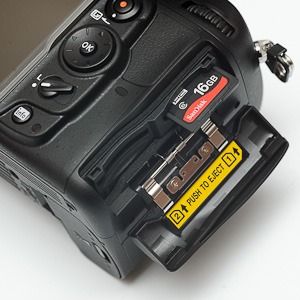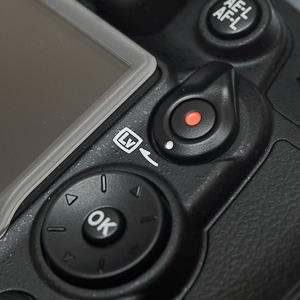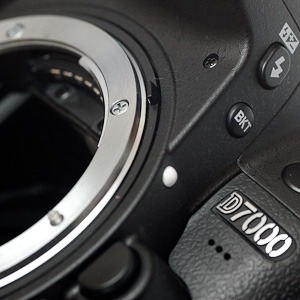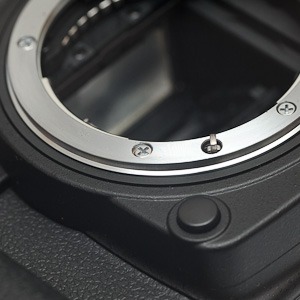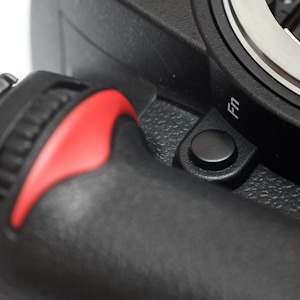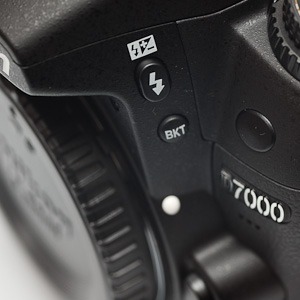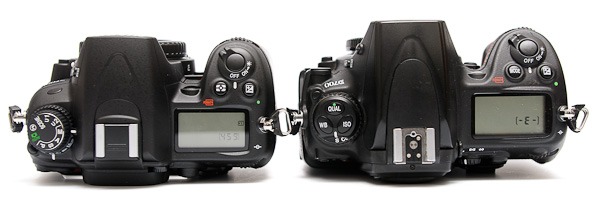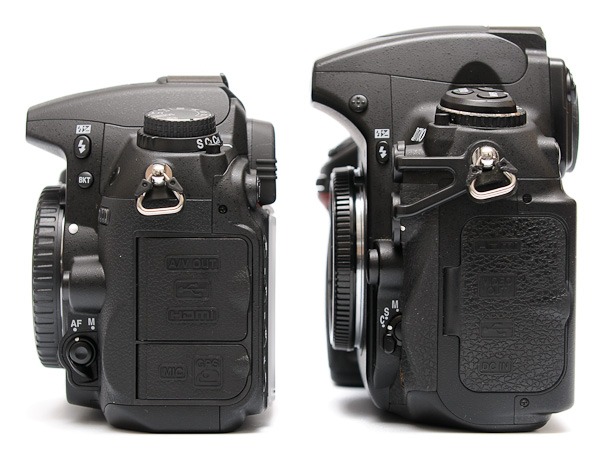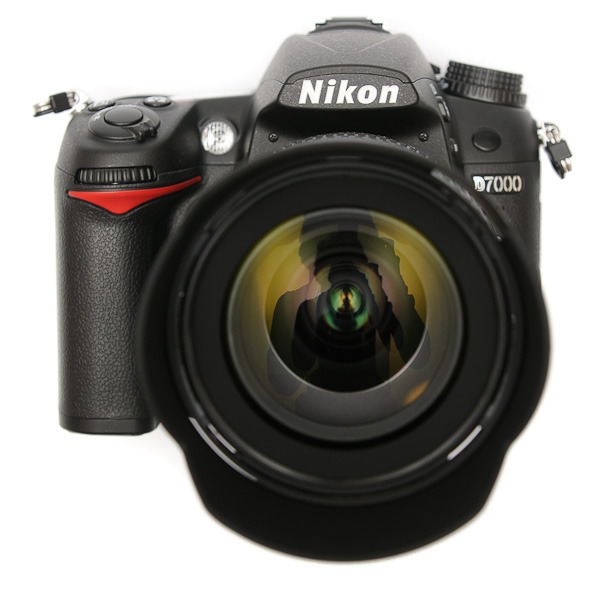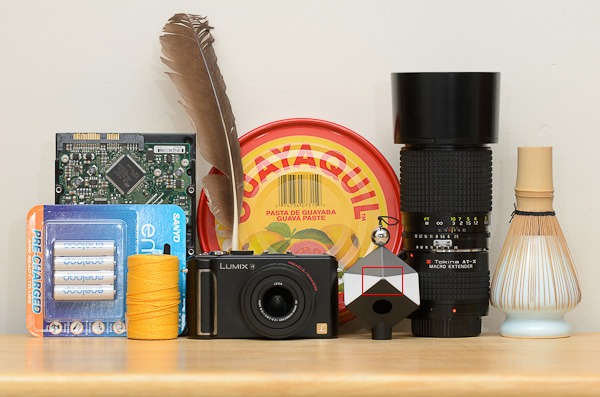Looking at the new Nikon D7000's specs, you might be right to confuse the newest DX DSLR as a replacement for the Nikon D300s at first blush. After all, it features many of the same specs, as well as some new features and flat-out improvements to Nikon's DX line of cameras.
Let's take a look at Nikon's newest – and in my opinion, their current best – DX-format DSLR.
Key Features
With a 16.2 megapixel CMOS sensor
- 16.2MP CMOS sensor
- 1080p HD video recording with mic jack for external microphone
- ISO 100-6400 (plus H1 and H2 equivalent to ISO 12,800/25,600)
- 39-point AF system with 3D tracking
Support These Reviews
The Nikon D7000 tested in this review was provided by B&H, where I personally buy all my camera gear. If you find this review helpful, please consider buying your next photo gear purchase from B&H,Amazon.com, or any of my other my affiliate links.
To learn how you can help support www.ishootshows.com, visit the page Buy Yourself Something Nice. Now with that out of the way, let’s get to the review.
What's In The Box
Body & Design
The Nikon D7000 is a good looking camera, if I do say so. To me, this DSLR strikes a very nice balance between not being too big or too small, not too heavy and not too light.
EN-EL15 Battery & MH-25 Charger
The EN-EL15 battery and its MH-25 charger are just a little different, thanks to the EN-EL15's short-proof contacts. Unlike most of Nikon's EL batteries, you can't simply slap the EL15 onto the MH-25 any which way – you have to slot the battery in from the right side of the charger, which lines up the pack for perfect contact with the charging terminals.
One feature of the D7000's battery system is that it's now impossible to accidentally drop a battery from the chamber. In addition to releasing a yellow safety lever, the battery also has to be released from a spring-loaded carrier before you can remove it from the body.
18-105mm DX Kit Lens
So, what makes the D7000 kit a kit? That would be the Nikon 18-105mm f/3.5-5.6 VR. For the DX camera like the Nikon D7000, this translates into a nice 27-157mm zoom range for everything from landscapes to portraits.
It's probably relatively sharp, contrasty, and all of that good stuff. Maybe. Or maybe it's not – but to be honest, this is never a lens I would use, so I won't be reviewing it.
Features & Controls
Size Comparison
The D7000 is small enough compared to the D700 for the difference to be fairly noticeable, though the size of the D7000 itself is comfortable in use – and I certainly didn't miss the D700's extra weight. Here's an idea of how the two bodies compare for size.
Handling & Shooting Impressions
The D7000 handles well. I shot the camera without the MD-11 vertical grip, which is an accessory which I think would have solved most of my gripes about the handling of this camera. Namely, shooting vertical frames without a vertical grip forces the human wrist into obscene contortions any way you slice it. This includes the D700.
That issue aside, my biggest complaint about the ergonomics of the D7000 are that the AE-L/AF-L button is a little too far in on the body of the camera – about 1cm father in than the D700's AF-ON button. This is only an issue since I use the AE-L/AF-L button to activate AF, not the shutter release.
One thing I love about the D7000 is the new Live View switch, which makes accessing this mode absolutely seamless with normal shooting. Unlike the D700 and D3, which hide the LV mode in the shooting mode dial, the thumb switch on the D7000's back lever is so accessible I found myself shooting with LV much more frequently.
In addition, I have to say how much I appreciate the dual-slot SD design of the D7000. After you go dual slots, you don't want to go back.
In my shooting with the D7000, I've used my trio of f/2.8 zooms – the Nikon 14-24mm f/2.8, Nikon 24-70mm f/2.8, and Nikon 70-200mm f/2.8 VR. While the D7000 is petite compared to the D3 or even the D700, these big zooms balanced just fine in normal shooting. The D7000 plays well with primes, too – the 35mm f/1.4, 50mm f/1.4, and 85mm f/1.4 I've used on the D7000 have all handled perfectly.
It's also worth mentioning how nice the viewfinder on the D7000 for a DX camera. Between the relatively large size of the VF and the 100% coverage, even manually focusing lenses is a breeze .
Performance: AF Speed & Precision
Overall, I found the new 39-point AF system very good. While it features 12-fewer points than the D300s and D700's AF system, it features a massive 28-increase from the D90 that it replaces. Win.
In use, I used the 9 cross-type AF points as well as AF sensors right out to the edge of the viewfinder and found consistent performance across them all. If anything, the aforementioned issue with the position with the AE-L/AF-L button caused me more “AF problems” than the actual performance of this CAM4800 system.
Pro lenses like my go-to Nikon 24-70mm f/2.8 snap into focus beautifully – no complaints at all with this system. Even for relatively lowlight (ISO 3200-6400 territory), the D700 never hesitated or hunted for focus.
Overall Image Quality
Image quality as a whole on the D7000 is excellent. The color, contrast, and acuity of this camera is excellent. Using the “camera standard” profile in Adobe Lightroom 3, I found that the color and gradations recorded by the Nikon D7000 came through beautifully.

In terms of resolution, the D7000 weighs in as Nikon's second highest resolution DSLR sensor, and I found acuity excellent with sharp glass. Naturally, lessor lenses are going to fare less well due to the pixel pitch of this new sensor, but for most shooting situations, simply stopping down 1/3-stop clarifies any optical issues in most lenses.
Using the D7000 at high ISO for live music photography, I found no I found no issue shooting at f/2.8 no problem at all.
Again, the overall image quality of this new DSLR is excellent. Let's skip ahead to the high ISO comparison – which is what separates the manly DSLRs from the little-boy DSLRs.
High ISO Comparison – DX vs FX Showdown
For live music photography, wedding photography, photojournalism, and other applications where shooting at high ISO is often a inevitable, image quality at these increased sensitivities is big factor for many photographers.
As a concert photographer myself, I was keenly interested in how the new Nikon D7000 performed above ISO 800. To test, I turned to one of my go-to cameras, the full-frame Nikon D700 to see just how well the new 16.2-million pixels of the D7000 perform.
We'll look at a test scene and several different crops to get a feel for how the two DSLRs compare.
Crop 1:
Crop 2:
Crop 3:
ISO Analysis
After shooting a full concert using nothing but the D7000, I came away impressed by the camera's quality at high ISO. After testing the camera against the Nikon D700, that general assessment still stands.
Overall, to my eye, the Nikon D7000 is only about a stop behind the D700 in terms of high ISO performance. Considering that the D7000 is a DX camera with a much higher pixel pitch than the D700, this is great.
ISO 100-400: In this range, the D7000 features more base noise than the D700, which is just minutely cleaner in areas of solid tone and color.
ISO 800: At ISO 800, the D700 starts to show more prominent luminance noise, but color saturation still looks fantastic. There's no reason not to shoot at this sensitivity if you need the speed.
ISO 1600: Moving up the scale, the sweet spot for the D7000 appears to be ISO 1600, as the sensor is still giving very good color fidelity and acuity in the image. In the real-world images I shot at ISO 1600, the luminance noise was a non-issue.
ISO 3200: By ISO 3200, the D7000's saturation takes a hit and increased luminance noise starts to compete with the fine details of the image. All things considered, the files still look great
ISO 6400: At ISO 6400, we're seeing an inevitable “crumbling” of the image quality, with fine detail starting to lose the battle against luminance noise. I'm impressed by how good the color is at this level though – unlike previous generations, this new 16.2 MP sensor and processing really hold saturation beautifully.
ISO 12800: Here at the HI-1 setting of both cameras, we've entered the open waters. In my experience, Nikon's own designated ISO range for conventional shooting is where the cameras perform at their optimum, it's here above the safety zone where things get interesting. To my eyes, the D700 starts to widen the performance gap at this sensitivity and we see the D7000's files start to break down more dramatically.
ISO 25600: Neither camera is delivering exceptional quality here. Unsurprisingly, the D7000 has dropped rather significantly in both contrast and the ability to deliver fine resolution. But is this any worse than shooting Tri-X or Ilford HP5+ and pushing it two stops? Probably not.
The Verdict:
Again, I am impressed. Beyond the D7000, which offers excellent image quality, what strikes me even more is what this kind of performance means for the next generation of DSLRS.
Considering that a 16mp DX (APS-C) sensor is the equivalent of a 34MP FX (full-frame 35mm) sensor in terms of pixel pitch, it's an exciting notion to think of what the next generation of Nikon's full-frame cameras may hold in terms of high ISO ridiculousness.
Real World Image Samples
Summary & End Notes
After testing the performance of the new Nikon D7000 and using this camera in my professional work, I have to declare this camera Nikon's best DX format DSLR currently in production. Even at 16mp, second only to the Nikon D3x in Nikon's stable, the D7000 delivers very clean files at high ISO.
In testing, the D7000 was only about a stop behind the big-sensored Nikon D700, which is impressive considering the tight pixel pitch of the new DX sensor.
In practice, I felt comfortable shooting at ISO 3200 with the Nikon D7000, and even higher sensitivities posed no problem. I was particularly impressed by how well the sensor and new EXPEED 2 processing held saturation and contrast, while the big 100% coverage viewfinder made the camera fit in side by side with my D3 and D700. Needless to say, the DX format has come a tremendous way since the Nikon D2x that I used to shoot.
Overall, Nikon has included features in the D7000 that trump even the flagship Nikon D300s, with better specs in numerous areas of performance. This is progress, folks. In fact, while the D7000 is a superb performer in its own right, what makes me more excited than anything is seeing the technology Nikon has used here and rolling it out in the next generation of DSLRs. The successors to the D700, D3s, and D300s will all benefit from the image processing and performance of this new sensor.
My advice? If the Nikon D7000 is in your price bracket, you cannot go wrong with this camera. At the time of this review, it's the best DX DSLR you can buy from Nikon, hands down. From Willie Nelson to Weird Al, this camera is more than up to the task.
Where To Buy – Recommended Retailers
The Nikon D7000 tested in this review was provided by B&H in NYC. If this review and other content on www.ishootshows.com was helpful to you, please consider supporting this site and purchasing your photo equipment any of the links in this review, my support page, or elsewhere on my site.
- Nikon D7000 @ B&H
- Nikon D7000 @ Amazon.com
- Nikon D7000 (body-only) @ Amazon.com
If you do buy through B&H or any of my affiliate links, drop me a line! I’d love to hear about what you picked up. B&H is where I personally buy the vast majority of my gear, and I’m looking forward to bringing you more reviews thanks to their equipment loans.
Questions? Comments?
Questions or comments? Let 'em rip.

